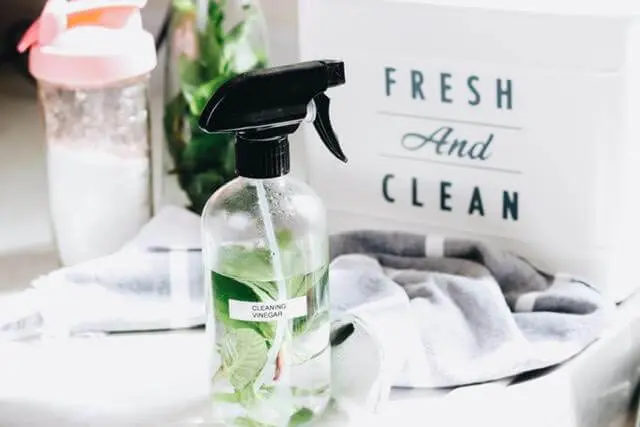How to Trim Basil Plants to Get An Unlimited Harvest! (Video & Photos)
Here you will learn how to trim basil plants and the basics of how to get unlimited basil all season long in your home garden.
This post may contain affiliate links. As an Amazon Associate, I earn from qualifying purchases. Please read my Disclaimer for more information.
In just a few weeks, you can maximize the growth of your basil plants by implementing the technique of trimming.

How to Trim Basil Plants Table of Contents
What is Basil?
Basil is part of the mint family and is also known as Ocimum basilicum. Other countries have been cultivating basil for over more than 5,000 years for culinary and healing benefits.
According to the University of Vermont, “In some Greek Orthodox churches, it is used to prepare holy water, as it was found growing around Christ’s tomb after the Resurrection. In Haiti, bush basil is associated with a pagan love goddess named Erzulie, and in Mexico, it is used in potions to attract lovers”.
They are more than 60 types of basil, but the most popular and easiest types of basil to grow are:

Purple Basil: Known for its spice, clover taste, and pretty dark rich purple color. Purple basil is a great addition to many Asian and Italian dishes.
Cinnamon Basil: Also known as Mexican basil and can grow up to 30 inches high. It has a spicy or sweet cinnamon flavor that creates beautiful lavender blooms when it flowers. Sow basil seeds shallowly when you plant basil seeds directly in the soil.

Lemon Basil: Has a lemon fragrance and can grow up to 18 to 20 inches high. Another easy-to-grow basil normally thrives in places like Asia and Africa.
Sweet Basil: Most widely used type of basil that has the traditional basil aroma. Can grow up to 24 inches high and needs full sun like all the other types of basil.

Thai Basil: Licorice flavor commonly thrown in Asian dishes and flowers a pretty purple color.
Basil has medicinal properties like preventing fatigue, treating the digestive system, and having antibacterial properties.
If you want an aromatic flavor, add basil to various dishes.
You can also create flavorful spices or seasoning with fresh basil and dried basil.
Growing Basil 101
- In order to grow successfully, basil needs at least six to eight hours of full sun.
- Help your basil grow and wait until your last frost date has passed to grow it outside.
- A good rule of thumb is to watch out for cold temperatures in your area especially anything below 50 degrees.
- Any temperature below 50 degrees can ruin your basil plant.

- As basil thrives in warmer temperatures it is not drought tolerant so make sure you give it plenty of water regularly
- Water your basil plant by targeting the soil, and avoid hitting the leaves when watering to prevent disease. Water droplets on leaves can be magnified by the sun and may cause your plant’s leaves to have black strikes, which is a result of burning from the sun rises.
- Fish emulsion is a great nitrogen-rich fertilizer for all basil plants.

Try growing basil in containers, in raised beds, or directly in the ground. Grow indoors or outdoors too! Herbs like basil don’t have issues growing in all types of environments.
Harvesting basil is as easy as growing it, but be sure to handle the leaves gently as they can bruise easily. Using your hand to harvest basil leaves is convenient but using scissors or garden snips will be better to use.
How to Trim Basil Plants: Tools To Prune With
When pruning your basil plant, you can most certainly use your hands to snap off leaves and stems. Even though you can use your hands, it’s not the best way to trim your basil plant, or any plant for that matter because you can easily damage a plant.
The best garden practice when pruning any plant, especially basil is to use pruning shears. Other gardening tools like garden snips and garden scissors also help with pruning to prevent any damage to plants.
Regardless if you’re buying a pair of cheap or high-quality garden hand tools they all will great the job done.
In my opinion, pruning shears are ideal for trimming small plants like basil that aren’t too thick to cut. Garden scissors are as effective as pruning sears, they look like ordinary scissors but with a sharper blade that will give a clean cut. Both are great garden tools to have and will not damage the vital stems and leaves of your basil plants.
When to Trim Basil
After growing at least 6 inches high you can start to prune your basil. Even a young basil plant can get a trim since there is no specific age a basil plant has to be to be pruned.
As long as you see a set of leaves in between the main stem of a basil plant you can start to trim it. If you see your basil growing vertically, that’s a good indication to give it a trim so it can start growing out and bushy.
If you are about to see basil flowers it is a good time to trim them. The flowers of a basil plant can be cut off to stop the process of it going to seed.

As soon as flowers become evident, pinch them off so the energy in the plant stays diverted to foliage growth. If the basil plant is growing vertically, pinch the leaves from the top to encourage lateral growth.
Since basil grows fast, keep trimming back basil as much as you want especially if it starts getting too large.
You can trim your basil when you want more growth and when you simply need to use or preserve it.
Why it Matters How You Trim Basil
Maximizing your production and seeing new branches of basil stems is the top reason to top off the plant. Regular pruning is a good rule of thumb and is considered best practices to continue to get new sets of leaves that will save you money & help leaf production so you can have a bushier plant of this annual herb
To keep healthy plant health of basil and getting a larger harvest depends on you trimming back the leaves of a basil plant. Even if it is the end of the growing season using this pro tip on your own basil plant will give you the best results. Pruning prevents basil from flowering and going to seed, wilting, and stopping production in general.

Enjoying the ultimate flavor of basil can be dependent on trimming as well. If you don’t prune your basil back, the flavor of your basil plant will eventually change as the older leaves get bitter. If you continue to trim it back you will always get new growth, aromatic smelling, and better-tasting basil.
Overall, encouraging the growth of your basil plant helps maintain its production, stay healthy, and keep its amazing tasty basil flavor.
The Wrong Way How to Trim Basil Plants
- Accidentally cutting off the wrong part of a basil stem can stunt its growth. Therefore, avoiding the wrong ways to trim basil is essential to keep your basil plant healthy and growing.
- Do not trim off the entire stem of a basil plant and avoid trimming off all the leaves.
- Removing all the leaves of a basil stem is another incorrect way to trim basil.
The Correct Way How to Prune Basil Plants
- Having some control over the growth of your basil plant is an amazing thing. Pruning enhances the growth of your basil plant, so doing it correctly is crucial for your overall basil health and growth.
- Only cut the main stem of a basil plant that has a set of leaves that are on both sides of the main basil stem.
- As long as you use the main stem as your guide up until you basil plant, you will always prune basil correctly.
Below is a step-by-step guide on how to trim basil plants the right way.
Step by Step on How to Prune Basil
- Look at your basil plant and see if your basil plant has at least 6 inches of growth and has lower and upper sets of leaves

- Follow up the main stem of the basil plant

- You can cut the main stem that is above the sets of true leaves leaving at least ½ inch of the stem.

- If you spot stems of the basil plant flowering, do the same as stated in step three but cutting off the flower bud.
- You can keep pruning basil plant as long as it keeps growing
How to Prune Basil Video Guide
Check out my YouTube video showing you how to trim basil plants to get an unlimited basil harvest.
Preserving Basil Leaves
- Drying basil: Preserve Basil by air drying or using a dehydrating. Store herbs like basil in a glass tight container after drying and it can have a self-life for 1-4 years.
- Preserving basil in salt: By drying basil you can mix it with your salt of choice to create a basil salt you can use in many dishes.
- You can also preserve basil in olive oil: Creating your own olive oil by infusing it with dry basil is another great way to preserve basil.

- Make basil pesto: Create pesto by using fresh basil and use it right away or leave it in the freezer for later use.
- For long-term storage, preserve basil leaves in the freezer using a Ziploc bag
- Save basil in ice trays: Mix basil in olive oil in ice trays ans freeze for later use.
- Basil vinegar: Infuse your dry basil harvest in a bottle of white vinegar.
- Freezing basil butter: Also known as compound butter, mix basil, garlic, and lemon juice in butter to create basil butter. Use it right away or freezing basil butter for later use are two creative ways to preserve your basil butter.

How long will basil keep fresh?
Depending on how you preserve basil, basil can last up to 1-4 years if dried.
Freezing basil can last up to 6 months to a year.
Basil butter is left in the fridge for at least a month and it can last up to 6 months in the freezer. Leaving any butter out on the counter will last at least 10 days. Be sure to use your best judgment when food goes rancid or spoils
It’s so important to know food spoilage information. Reliable sources are linked below.
- Statefoodsafety.com: An Age-Old Debate: Can You Leave Butter Out?
- FDA: Evaluation and Definition of Potentially Hazardous Foods
- BC Dairy: Keeping Butter Fresh

FAQ about Pruning Basil
How do you trim basil without killing it?
Make sure you take pointers from what we mentioned earlier in this post on how to trim basil correctly. Avoid cutting off the whole stem & be sure to leave some foliage on your basil plant so photosynthesis can take place and help your basil continue to grow.
Will Basil Regrow After Cutting?
The quick answer to this question is yes, your basil plant will certainly regrow if you cut it back. Not only will it regrow but it regrows even stronger, healthier, and more abundant in the long run.
How to Cut Basil for Cooking
Cooking with basil is very easy to do, and can be done using the leaves whole or cutting them.
Cut basil for cooking by stacking a handful of basil leaves on top of each other, roll them into a cylinder shape and start cutting basil vertically. When cutting basil this way the leaves should look like thin strips of basil.
Does this work for all types of basil?
Pruning basil the way we have discussed in this post will work for all types of basil. The benefits of pruning are very effective to maximize your harvest in any type of basils as it helps it grow to its maximum potential.
How often should I prune down my basil?
Prune whenever you see start to see your basil plant start to flower or as soon as it grows about 6 inches tall. Also, be sure that you can see multiple sets of leaves on your basil’s main stem. If your basil is not looking full and bushy, start pruning it to start enhancing its growth.
How Big Can a Basil Plant Get?
With over 60 varieties of basil, all kinds of basil can reach all types of different heights and widths. The range of how big a basil plant can get is between 30 inches to 3 feet high and up to 18-20 inches in width.

How to Prune Basil Key Points
Overall, pruning basil is a great way to get an unlimited harvest, and all the key points below are good takeaways that were grabbed from this post.
- After growing at least 6 inches high you can start to prune your basil.
- The health of basil also depends on you trimming back the leaves of a basil plant. Pruning prevents basil from flowering and going to seed, wilting, and stopping production in general.
- Cutting the main stem of a basil plant that has a set of leaves that are below and grow out on each side of the stem is the part you should be trimming.
- Do not trim off the entire stem of a basil plant and avoid trimming off all the leaves.
- Pruning shears are ideal for trimming small plants like basil that aren’t too thick to cut.
- As long as you use the main stem as your guide up until you basil plant, you will always prune basil correctly.
Let me know if this how to trim basil plants post was helpful in the comments below!
Check out our yummy pesto recipe using basil, a helpful gardening post, and a guide on how to grow other amazing herbs.
Easy to make Arugula & Basil Pesto Pasta Salad
Easy Go-to Herb Garden for Beginners Guide
7 Easiest Vegetables to Grow for a quick Harvest
PIN FOR LATER







